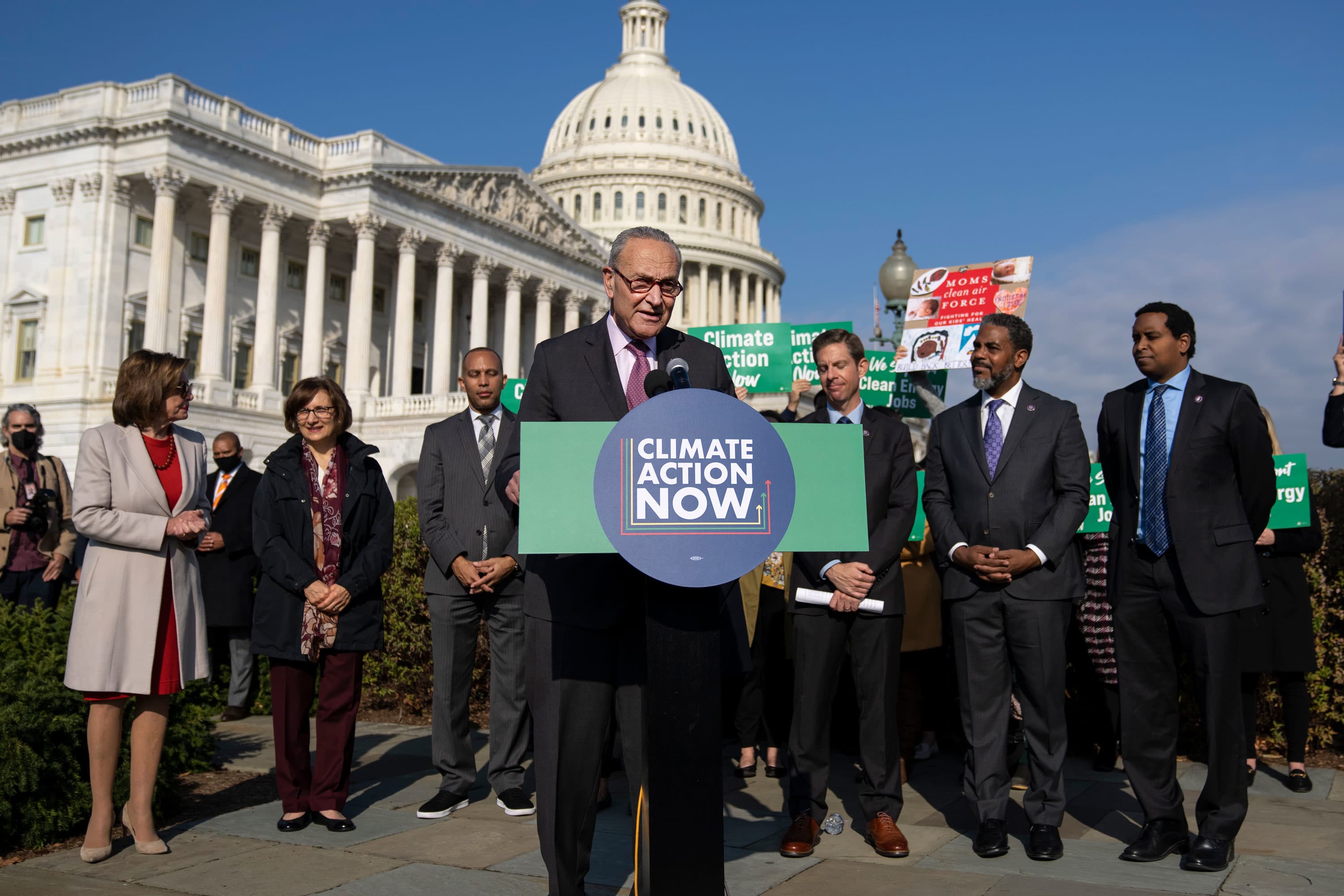House Democrats have passed President Joe Biden‘s $1.75 trillion social policy and climate bill, a measure that’s by far the largest effort in U.S. history to combat climate change and drive down greenhouse gas emissions.
It positions the U.S. to slash emissions in half by 2030 and reach net-zero emissions by mid-century.
The bill invests $555 billion in climate programs, largely through providing tax incentives for low-emissions energy sources. That’s less than the $600 billion in the Democrats’ original $3.5 trillion plan, but still emerges as the single largest category in Biden’s bill.
If enacted, Biden’s framework would enshrine climate change action in law, making it difficult for future administrations to roll back these measures. The last U.S. effort to pass climate legislation was in 2009, when congressional Democrats failed to approve a carbon pricing system under former President Barack Obama.
The bill’s biggest climate spending components include 10-year tax credits to expand and accelerate investments in renewable power, including wind, solar and nuclear. The bill also includes a proposal to raise the electric vehicle tax credit to up to $12,500 for vehicles made at a unionized factory in the U.S.
Other climate-related items in the legislation include:
- Delivering consumer rebates for shifting to clean energy and electrification
- Advancing environmental justice by investing in disadvantaged communities
- Creating a new Civilian Climate Corp to create jobs and conserve public lands
- Investing in coastal restoration, forest management and soil conservation.
“The Build Back Better World is going to show that we can grow our economies, fight climate change, and leave a better, cleaner, more livable planet for all of our children,” the president said in remarks at the COP26 climate summit in Glasgow, Scotland earlier this month.
“This is the most consequential climate vote in our history,” Manish Bapna, president and CEO of the Natural Resources Defense Council, said in a statement. “It’s about creating jobs, driving innovation, advancing equity, and confronting at last the rising costs and mounting dangers of the climate crisis.”
Getting the plan through the Senate could prove challenging. Democrats can’t afford any defections from their 50-member caucus. And two key Democratic centrists, Sen. Joe Manchin of West Virginia and Sen. Kyrsten Sinema of Arizona, have not endorsed the president’s framework.
During negotiations in Washington, Manchin was able to sink the clean electricity program, an initial core component of the president’s framework that would have incentivized energy companies to shift away from fossil fuels to clean energy and penalized companies that did not. Manchin’s state is a top coal and gas producer, and the senator’s single source of income last year was a coal consulting business he founded.
Senate Democrats aim to pass the plan before Christmas and finish their agenda before midterm elections next year. The House will need to pass the bill again if it is revised.
